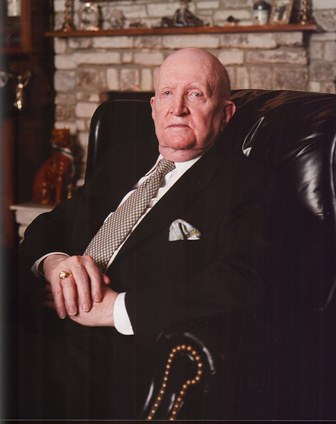Mr. Neal Prince,
R.A., A.S.I.D
(Curriculum Vitae) |
|
|
|
Index Holdings Relating to the 1940's |
|
Index Holdings Relating to the 1950's |
|
Index Holdings Relating to the 1960's |
|
Index Holdings Relating to the 1970's |
|
Index Holdings Relating to the 1980's |
|
Index Holdings Relating to the 1990's |
Professional
Biography
2000's |
|
Mr.
Neal Prince Resource Image Data Base |
|
|
InterContinental
Hotels
Historical
Background
|
John B. Gates,
Chairman of the Board |
Robert Huyot,
Chairman of the Board |
Hans Sternick,
Chairman of the Board |
John P. Sutherland,
President
Latin American
Division |
Mario Di Genova,
President
Europe/Africa Divsions |
R. Kane Rufe,
Sr.
Vice President
Far East/Pacific Division |
John C. Carrodus
Sr.
Vice President
of Services |
Neal A. Prince
Vice
President
Graphics and Interior Designs |
|
|
|
Departmental Staff and Contractual
Designers: |
Kenneth Smith,
ASID |
Charles R Alvey,
Graphic
Designer |
Richard Simpson,
Graphic
Designer |
|
Bill Embery |
Dale & Pat Keller,
ASID |
Joe Grusczak,
ASID |
Trisha Wilson,
ASID |
James Ray Baker,
ASID |
Irene D'Alessio,
Interior Designer |
|
|
Arie deZanger,
IHC Photographer
|
|
 |
|
|
|
|
|
|
|
|
|
|
|
|
|
|
CONTACT
US |
|
|
 |
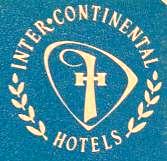 |
|
* * * Webpage is being updated
* * *


|
Who
is Mr. Neal Prince? Mr. Prince is a trained
Architect from Rice University, an Art Historian,
Art Collector and a person with a vast passion for
Motion Pictures and Theatre History, especially
Set Designs. These elements came together to build
a foundation to Mr. Prince's skills, which later
became recognized as his ability for designing
Hotel and Restaurant Interiors. Mr. Prince
incorporated his own passions of above, into an
International branding philosophy that remains as
strong today as it was when he developed his
philosophy of Hotel and Restaurant Designs, which
is visible today, in Hotels worldwide. But what
makes Mr. Prince different? He was a pioneer
within this Industry, along with Dale and Pat
Keller, of Hong Kong, in designing Hotels in
countries that never had an International Hotel
presence. Mr. Prince, along with Kenneth Smith
(Interior Designer), Charles Alvey (Graphic
Designer), Richard Simpson (Graphic Designer),
William Embury (Interior Designer), Joe Grusczak
(Interior Designer), James Ray Baker (Interior
Designer) and Irene D'Alessio (Interior Designer)
and many others were the first, to sent the
standards for International Hotel Interiors. And
what is incredible is that he did not have the
grand budgets that most designers have today. Mr.
Prince used local talents and products, when
available and appropriate, to augment his designs,
which, in return, allowed local Artist, Gallery
Owners, Merchants and vendors to view
InterContinental not as an invader, but as a
partner in creating new sources of commence within
the local economy. What is even more unique in Mr.
Prince being different, was that Mr. Prince has
always credited his success, not in the terms of
"I", but "WE". Mr. Prince, being from Corsicana,
Texas, has always remained modest and respectful
and always have contributed his success due to the
fact that designing hotels is a "TEAM" effort,
from his Departmental Staff to his Professional
Associate Designers that he had brought on to do a
certain project for the vast inventory of
InterContinental Hotel holdings. This website is
to bring together the collections, resources,
stories and images documenting a period of time,
before computers, mobile phones, fax's or video
conferencing. This website is to recapture the
time when International Hotel Design Industry
remained in its infancy before the growth and
development into what we have today as multi
billion dollar companies. Each Hotel on this
website will encompass how Mr. Prince and his
Staff and Professional Associates overcame the
troubles of designing Hotels, from a historic
point of view, to what was necessary to open the
Hotels, maintain the Hotels, and what lessons were
learned to be applied for the next project.
-webmaster
|
|
Hotel:
Hotel Indonesia:



Djakarta was the gateway to the archipelago of
Indonesia at this time in the early 1960's. To
its tranquility, its grandeur, its dances and
its feasts were becoming well recieved with the
International Travellors.
On the Islands of Indonesia (Sumatra, Java,
Bali and a thousand others) you were able to
discover a sysmetry and balance of great
beauty. In the spectacular Magic Lion Dance of
Bali, good and evil move to the same rhythm -
in homes you were able to discover the colors
and random patters of the forest in batik
drapery - in the wildrest celebrations there
were the peaceful spirit of the giant granite
buddhas of the forest. Symmetry and balance
...all opposites are the same. The guest were
able to find much of the islands at the Hotel
Indonesia. Handwoven batiks, giant ivory tusks
curving over our festive hall, oriental
garndes, an the gentle peopel who are our staff
welcome the guest to the subtle delights that
are Indonesia
Location:
Jakarta, Indonesia
This location was the key to the Spice Islands
of the past to the Indonesia of the Future at
the time. Deisgned to be ahead of its time in
service, comforts and the most current
innovations were applied to this Hotel under
the direction of Neal Prince, who was the Lead
Interior Designer. This Hotel Indonesia was the
showcase for the riches of Indonesian
traditions and rich culture. One of two
magnificent properties in Indonesia, which was
managed by Inter-Contonental Hotels at the
time, the Hotel Indonesia held all of the
worlds of Indonesia ...past, present the
furthre.
Architect:
Lead Interior Designer:
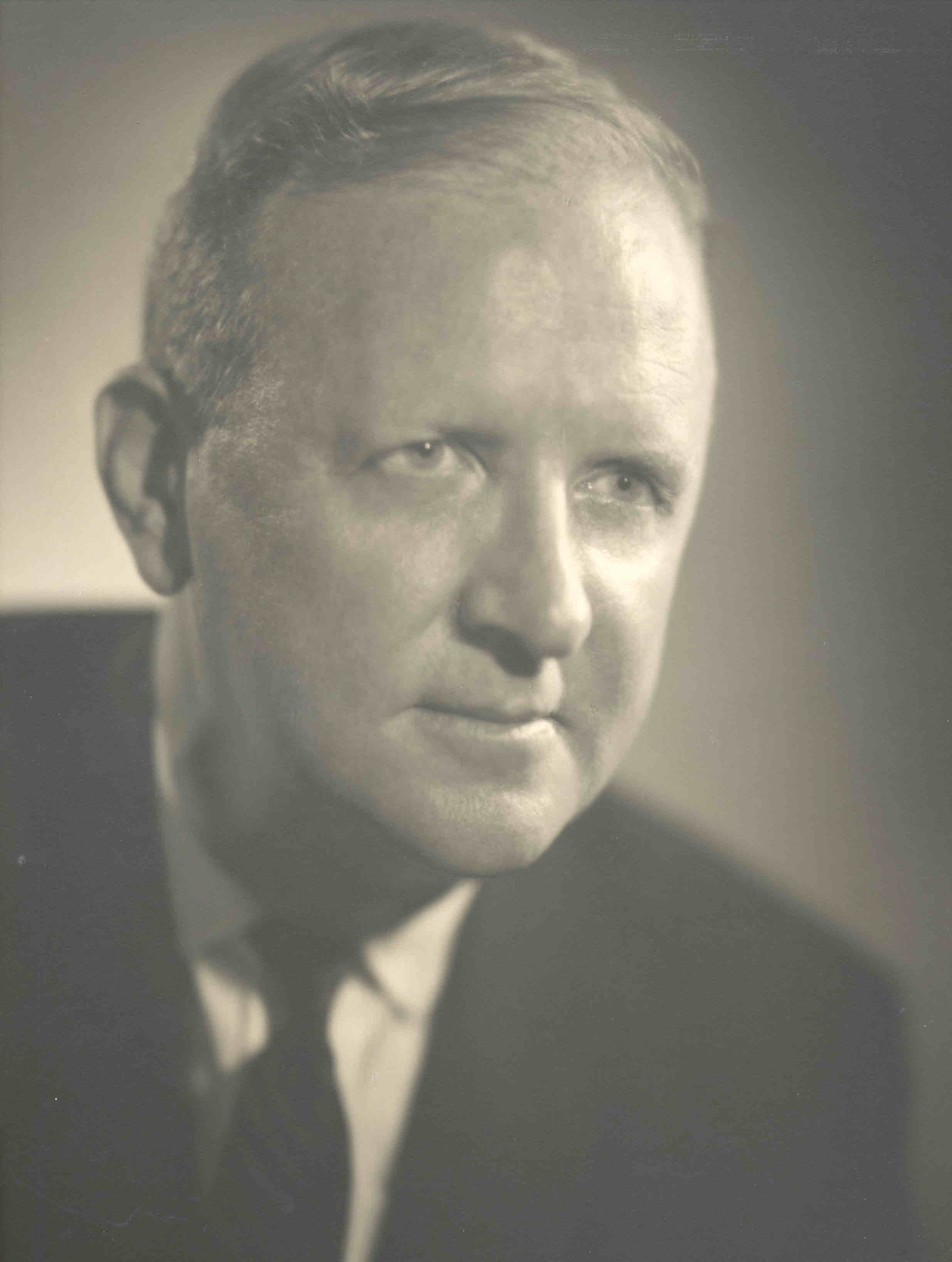
Neal A. Prince, R.A., A.S.I.D, Lead Designer
V.P. of Graphic and Interior Design Department,
InterContinental Hotel Group 1960-1985
Lobby:

The new and old, a balance and symmetry
Rooms:
In 1962, this Hotel was the tallest building in
Indonesia. Being 450 room hotel is the high
centerpiece of Oriental gardens and pools. Each
room is air-conditioned and panelled in teak.
Many have balconies with a memorable view of
Djakarta. For the guest convenience, there is a
complete range of shops and services at the
hotel from valet and laundry to the island's
most complete gift shop.
With views looking upon the very larger pool
and every cosmopolitan luxury that was offered
in 1960. The property is located on the major
boulevard, near the embassies.
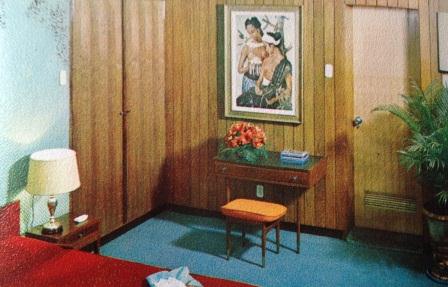

This image illustrates that the rooms were far
from ample to lavish - one of their many suites
at the time when the Hotel opened in 1962.
How does Mr. Prince's identify an outstanding
Hotel?
Response: When you arrive at the Hotel,
telephone room service and order a club
sandwich to be delivered to your room. Once the
room service had delivered your requested club
sandwich, take a moment to access how it was
prepared, what materials they used to create
your club sandwich and then taste the sandwich.
Mr. Prince firmly believes, from 55 years of
travelling around the world that if a Hotel is
able to prepare the "simple" club sandwich
correctly, then that Hotel is being operated
correctly.
Restaurants/Lounges:
Nirwana Supper Club:
Nirwana Supper Club was the most popular supper
club in Indonesia at the time.
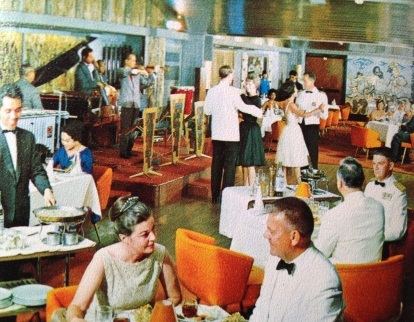
Restaurant Orientale:
The Restaurant Orientale was a restaurant which
was filled with high art from the Far Eastern
edges of the area to offer the most Far Eastern
cuisine in the region. The Restaurant Orientale
creates the subtle change of Indonesian and
Chinese specialties.
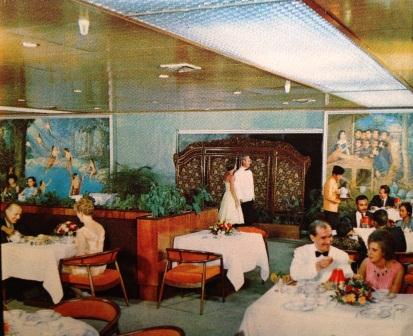
Ramayana Restaurant:
This restaurant showcased the various
International cuisines that were being offered
at the time. This restaurant was a very
successful restaurant at the time. There is, in
the Islands, an annual epic festival of 500
dancers. Its name is Ramayana and Ramayana is
the theme of their international resturant.
Here, dancers, birds and flowers are captured
on mosaics...European chefs hold court over
haute cuisine. And here, travellers celebrate
their arrival to the Spice Islands.
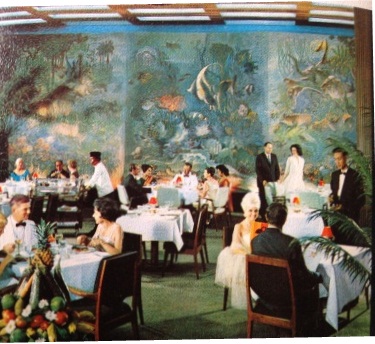
Pool Area:

The Hotel Indonesia's fabulous pool, with
refreshments served on the terrace
.JPG)


Meeting Facilities:
The Bali Room, being the headquarters for
international conventions and state dinners,
was also able to accommodate 1,000 persons. It
is entirely flexible and was able to arrange
for on-stage performances.

The Bali Room seen here above with the stage,
stereophonic sound and cinemascope was already
able to be arranged for banquets or large
receptions for the guest to hold meetings or
entertain for their pleasures.
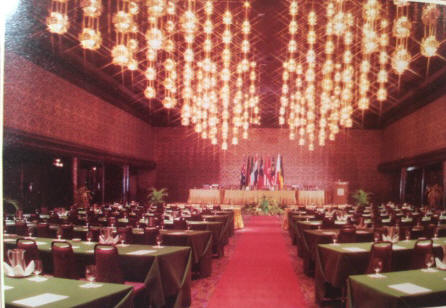
Formal Ballroom:

Comments:

Images held by the Collection:
|
|
|
|
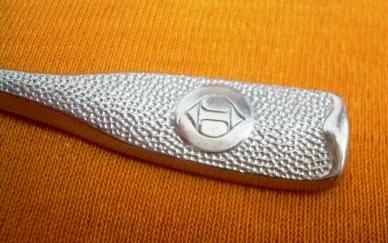 |
|
|
|
|
|
Attached is an 1971 MEMO from Mr. Prince on
the Process of Designing a Guest Room for an
Hotel
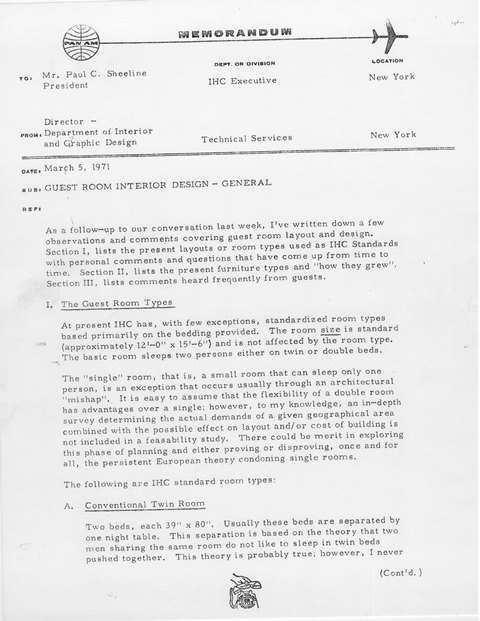
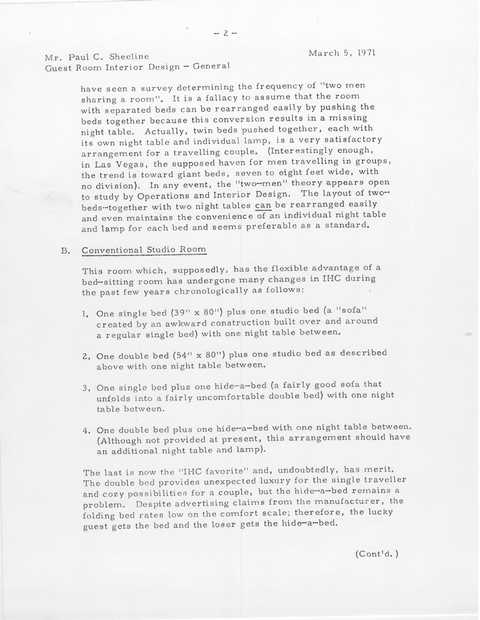
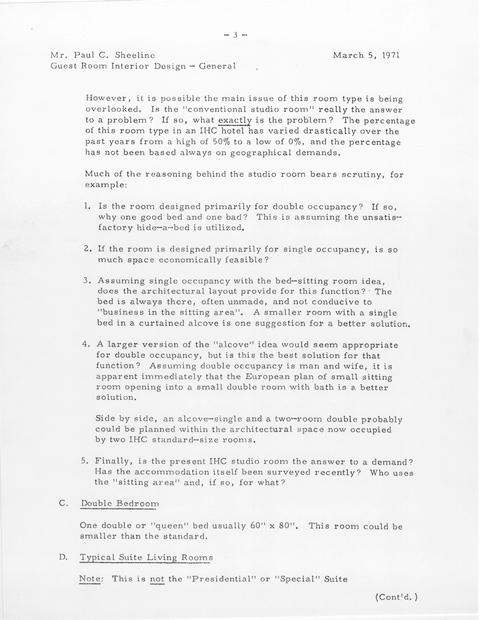
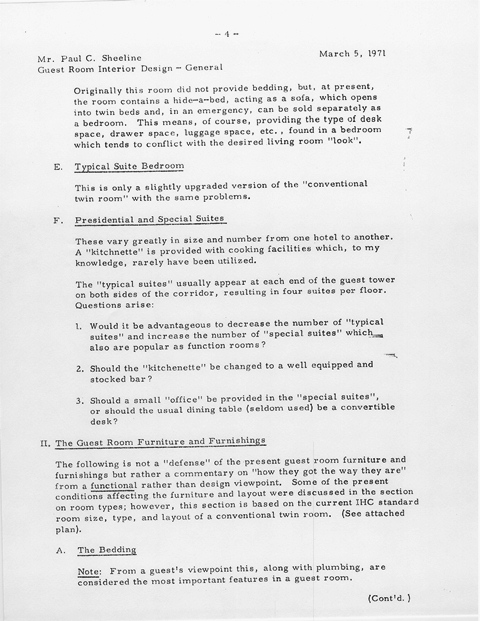
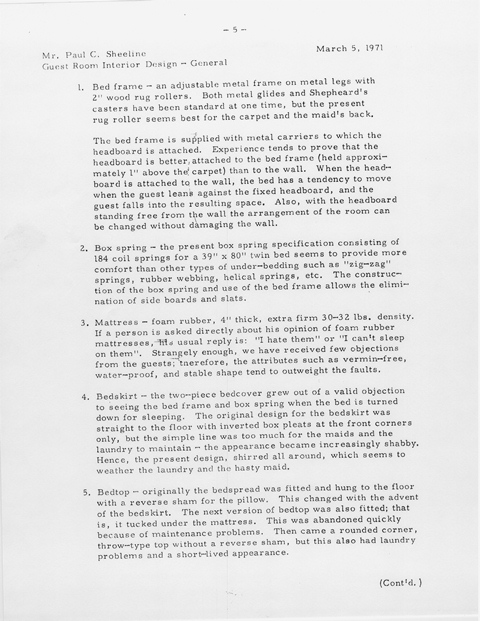

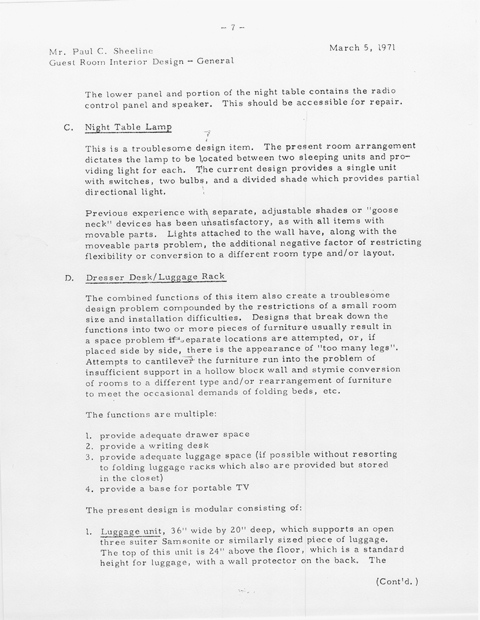
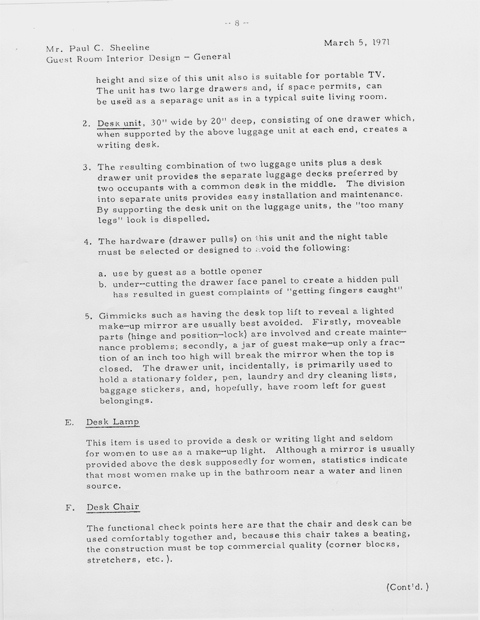
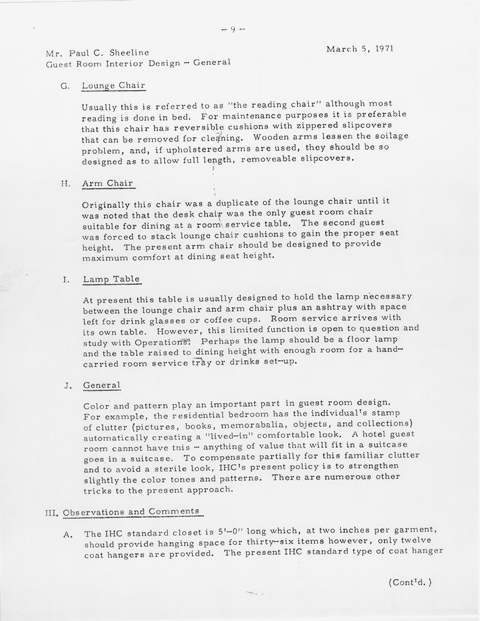
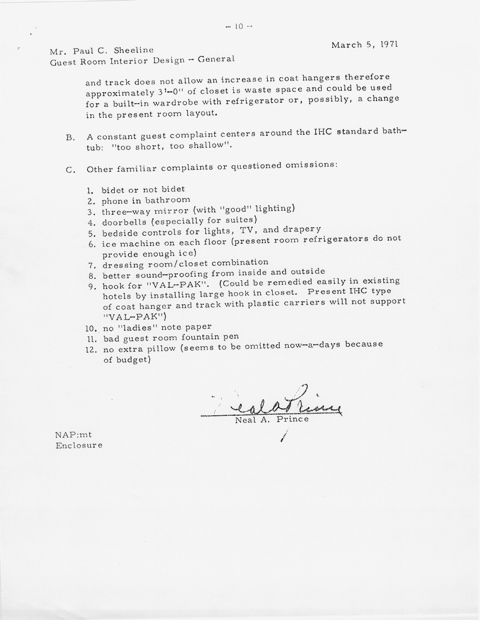
|
|
STATEMENT
OF
InterContinental HOTEL
INTERIOR
AND
GRAPHIC DESIGN
POLICY
BY
NEAL PRINCE,
ca. 1961
The approach to hotel design differs greatly
from interior design for an individual. The
latter is dictated by the aesthetic
environmental pleasures of one particular
person or family, whereas hotel design is a
coordinated effort between the functional
requirements if IHC Hotel Management and
Operations, the architectural concept and space
allocation, the desires of the local hotel
company, the limitations of restrictive
budgets, and the harmony and market of the
country in which a hotel is located – all
combined to produce a profit marking plant
reflecting the current international tastes of
a widely diversified market.
Although standardization would appear to be
desirable in a rapidly growing industry,
experience indicates the most successful
efforts are based on individuality related to
the country of origin rather than
standardization of design, but with an
overlying emphasis of international
standardization of quality and service.
Each hotel in each location produces its own
surveyed, conceptual, and operational
requirements of IHC, its own local interior
designers, and its own problems of local
availability and manufacturing; however, the
following outline of goals is generally
applicable:
A. To produce good design based primarily on
the functional needs and requirements of IHC
Operations in order that Management can
merchandise fully the facilities provided and
develop a high quality of service; this design
to be approached simultaneously along the
following avenues:
1. Concept (objectivity) – initiated by IHC
Operations and local Hotel Company (where
applicable).
2. Function (utility) – based on past
experience and current consumption of practical
innovation.
3. Construction (fabrication) – utilization of
local market facilities and methods wherever
possible.
4. Budget (feasibility) – dictated by market
surveys indicating the initial expenditure
warranted by projected profits.
5. Beauty (design) – a conglomerate result of
the thinking and ideas of all parties involved
coordinated into a smooth, compatible result.
B. To insure that the original design concept
and subsequent development of each project is
based not on the likes and dislikes of any one
faction but expresses the taste and insures the
comfort of the international guest; and also
utilizes, wherever possible, the trades,
manufactures and craftsmen as well as the arts
and crafts, ornamentation, styles, and
traditions indigenous to the country in which a
project is located.
DISCLAIMER: A considerable effort has
been made in good faith to ensure that
all information accessible from this
site of Archives and memoirs are
accurate. Despite this effort, it is
clear that errors are inevitable.
Consequently no guarantees are expressed
or implied as to the accuracy,
timeliness, currency or completeness of
any information authored by persons at
or agents of the Neal Adair Prince Trust
or its Estate Trust Holding affiliates,
or accessible using links from this
site. Nor is any warranty made that the
information obtained from this
Educational Archival site or that of an
affiliate is valuable or useful for any
purpose. A reader assumes full
responsibility for any actions taken
based on information obtained from this
Educational Archival Interior Designer's
web site. In particular, we emphasize
that the information available through
this site should not be interpreted as
professional International Interior
Designer advice. All information from
these archives, from this or any other
source, needs carefully to be reviewed
with your own trusted License Interior
Designer provider before being
acted upon in any way.
|
|
|
|
 |
